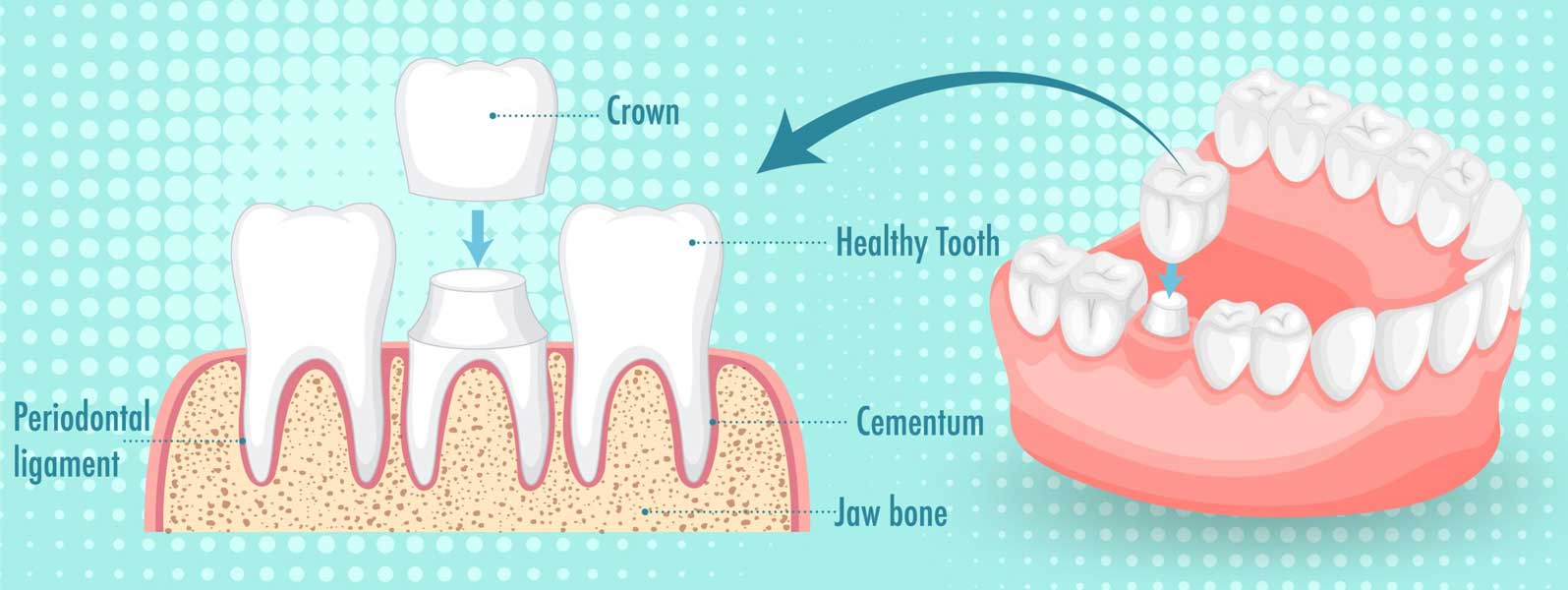
Crowning A Tooth After A Root Canal
“A root canal treatment will reduce the integrity of the tooth, weakening its overall structure.”
Root Canal
8 June 2022
A root canal, also sometimes referred to as an endodontic treatment, is a procedure used to treat infected and dead nerves within our teeth. This invasive method involves drilling into the centre of the tooth and permanently removing the infected or inflamed pulp. The pulp itself is the central part of the tooth, containing blood vessels, connective tissue, and nerves. After this, the cavity used to extract the pulp is cleaned, filled and sealed, relieving the patient of any pain or further risks to their health.
While this procedure is necessary, it often leaves the tooth in a vulnerable position. A root canal treatment will reduce the integrity of the tooth, weakening its overall structure. This is the reason it’s highly recommended to crown the tooth following a root canal procedure. A dental crown will add strength and stability to the now technically dead tooth, allowing it to withstand regular pressure and extending the lifespan of the tooth.
What Causes A Root Canal?
Essentially, bacteria. Like many other oral conditions, bacteria invading areas they’re not meant to will lead to problems. Root canals are required when a cavity, crack or any damage to the tooth is left unaddressed for a long period of time. These holes and cracks allow bacteria to work their way into the pulp of the tooth, infecting the inside area and the nerve.
There are a number of things that can cause the root canal to become inflamed or infected:
- Deep decay
- Decay under a loose filling
- A fracture of the tooth
- A blow to the tooth
- Severe wear of the tooth
- Severe tooth grinding
- Some types of gum disease
Are There Alternatives To Root Canal Treatment?
If your dentist has recommended a root canal, it’s probably because it’s the safety and easiest way to keep your tooth. However, there are less common options available if you desperately want to avoid the procedure.
A pulpotomy is possible if only the top layer of pulp is damaged or infected. This involves removing the inflamed pulp and treating the area with a healing solution such as formocresol, calcium hydroxide or MTA. The rest of the pulp and the root are left intact. After this the tooth can be filled up and treated as normal. This method isn’t commonly used in adults and generally only used on young children with baby teeth who’s nerves haven’t yet fully formed.
Tooth extraction also exists as a possible treatment. Extraction involves the removal of the tooth altogether. It’s not recommended that any teeth be removed unless they are completely unsalvageable. While there are products like dental implants and bridges available for use, no dentist will advocate for the removal of a tooth that can still be saved. Extracting teeth will reduce the integrity of the jaw bone and can cause a long list of problems in the future.
So How Does A Crown Work?
There are different types of crowns and techniques depending on your circumstances. You may be able to have your tooth crowned (or capped) in one sitting, or it might require multiple visits to affix your final crown. Traditionally, the crowning procedure follows the protocol of the latter.
Firstly, the tooth is examined physically and under an x-ray. A mould of your mouth is then taken to ensure a comprehensive understanding of the area. Next, the outside of the tooth is filed down to create a base or platform for the crown to sit on. An impression is taken of the now trimmed tooth and surrounding area in order to make the crown. A temporary crown is then adhered to the trimmed tooth while the impression is sent off to create the final crown. Once the crown is constructed and arrives back at your dentist, your temporary crown can be removed and the permanent, perfectly shaped crown is then adhered.
Same-day crowning is a much different procedure. Your dentist will use a digital scanner to take a picture of your tooth and mouth. With the aid of advanced technology, the crown is fabricated on the spot and can be applied straight away. This sophisticated technique doesn’t require the use of the temporary crown and can be completed from start to finish within a couple of hours.
Types of Material A Crown Can Be Made of
Dental crowns can be made of different materials. They’re classified into three main types:
- Full Ceramic – Porcelain Crowns
The most popular choice, these crowns are made from zirconia or lithium disilicate.
- Porcelain-Fused-to-Metal Crowns (PFM)
A metallic base with a porcelain layer on top.
- Full Gold Crowns
The strongest option available, these gold crowns are recommended for rear teeth that endure a lot of direct pressure.
How Much Does A Crown Cost?
The material you chose and your individual dentist will affect the cost of your crown. The average price across Australia for porcelain crowns is around $1400. PFM crowns come in slightly higher at around $1500 a tooth and gold crowns are, as expected, the most expensive material with an average cost around $2000.
Root Canals and Crowns At Innovative Dental
While practising good oral health will help prevent the need for root canal treatments and subsequent crowning, there are always going to be times when it’s required. If you think that you’re in need of a root canal, crowning or any other treatment options, get in touch with Innovative Dental.
Contact us on (03) 9346 8333 or Book in for an online appointment today.





